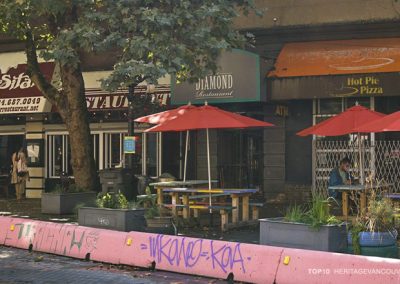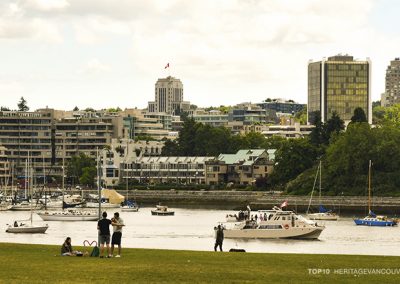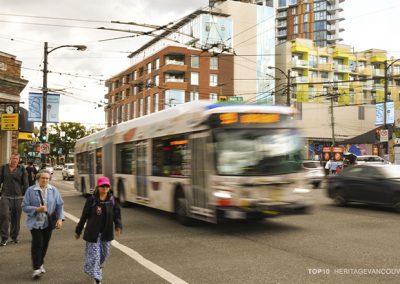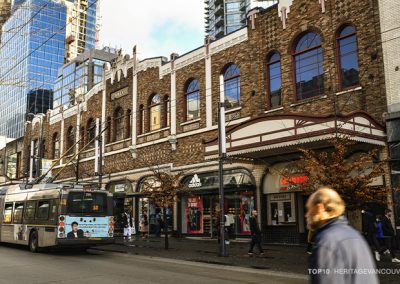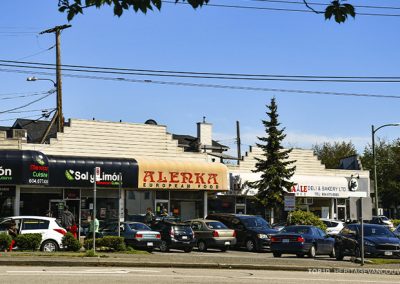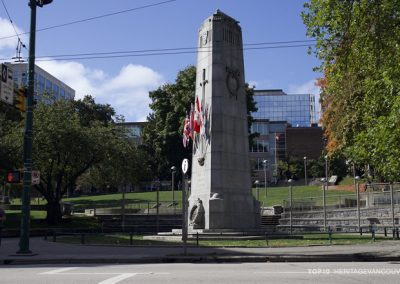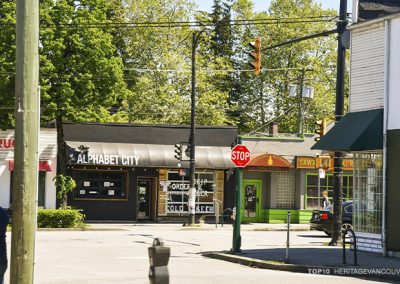A rezoning proposal for 5163-5187 Joyce Street near the Joyce-Collingwood Skytrain station drew a lot of interest earlier in the year. The site is proposed to be redeveloped for a 32-storey building with 293 market strata condominiums planned. On the second floor is proposed space for a Vancouver Public Library and the ground level is commercial space.
Covered in the Tyee as Vancouver’s Filipino Heart, attention has been on the cluster of six small businesses, many Filipino-run and patronized, facing displacement. Sari-Sari Filipino Convenience Store, Kumare Express, Pampanga’s Cuisine, Plato Filipino, Joyce Jiaozi and Kay Market will potentially be replaced by commercial space for two units.
About
During the City of Vancouver Virtual Open House sessions for public consultation, organizations such as Collingwood Food Justice and Sliced Mango Collective conducted their own community engagement to collect comments about the impacts that the loss of these businesses will have. This part of Joyce is particularly important for the Filipino-Canadian community that is centred in the neighbourhood, as well as those in the Metro Vancouver region who make this strip a destination. Sliced Mango Collective’s #SliceofSupport campaign describes how culturally important this hub is:
But these are more than physical spaces – they are places for community and celebration of culture. They allow community members to access cultural food items like herbal medicines and traditional dishes. These businesses are what make the Joyce-Collingwood neighbourhood a diverse cultural hub and a place that immigrant folks can feel at home.
There are aspirations in a number of the City of Vancouver’s planning strategies that community feedback has identified as relevant to the situation with the food hub. The response in the FAQ section on the City of Vancouver’s Shape Your City page for the redevelopment of 5163-5187 Joyce Street reads:
The community businesses and spaces on and around the proposed site are well aligned with the City’s Healthy City Strategy, Food Strategy, and Culture Strategy, and the Strategies’ goals are to ensure access to healthy, affordable, and culturally appropriate foods, cultivate connections, and prioritize intangible cultural heritage and promote cultural redress.
The City recognizes that the loss of these important cultural food assets would be a significant impact to the community and, after hearing the community feedback, City staff will be discussing these concerns with the project applicant and will be requesting that they consider making provisions for displaced businesses to return to the site following redevelopment.
Although the City is now looking at this issue, if these are indeed significant cultural assets, how can they be treated so that they are not regarded as tradeoffs and made vulnerable in the first place?
Heritage businesses & Landscape approach
In addition to the strategies mentioned in the FAQ section, relevant to this situation is the “heritage businesses” and the heritage approach to urban landscapes.
In 2017, Heritage Vancouver Society was part of the team led by LOCO BC that conducted research for the City of Vancouver on San Francisco’s Legacy Business Program. In order to address commercial affordability challenges and displacement pressure in San Francisco, this program gives assistance to businesses meeting criteria for Legacy Business status. As part of that research for Vancouver, we proposed a definition for heritage businesses that factored in how businesses helped sustain values and ways of life important to the residents of a neighbourhood such as meeting their cultural needs or offering price points affordable to neighbourhood incomes. Part of this work most recently made it into DTES Special Enterprise Pilot Program.
That definition was based upon a “landscape” understanding and approach to heritage that is now recognized as one of the drivers in the the updated City of Vancouver Heritage Program. In contrast to the traditional heritage approach focused on the expert-led material preservation of buildings much like artefacts, a landscape approach is focused on relationships that people have with place. It is the community-based aspect of it that reveals significance on social and community levels. How community members have described the significance of these businesses at Joyce-Collingwood to their identity and cultural practices is an example of why the landscape approach has become a part of heritage practice.
All these approaches and strategies, while recognized, are not usually serious considerations at the outset. In this case, transit-oriented development is the priority as indicated in the Joyce-Collingwood Station Precinct Plan. One of the main rationale given for this type of development is to create new spaces that will “activate the street level”, “activate the neighbourhood” and create “a more active, vibrant local shopping street” or “more socially connected neighbourhood”. It disregards the fact that this street is already activated, active, vibrant and socially connected.
The purpose of the landscape approach the City of Vancouver heritage program has adopted is to plan for change in communities by knowing beforehand the neighbourhood values that are important, what is vulnerable, and what is important to keep so that those questions can be addressed in the development.
The City’s recognition of the impact to these important cultural food assets after the open house is a sign that the work of understanding the community is too late in the process. This could be avoided if the approaches and strategies discussed are default and not recognized as important only when there are strong voices asking about them.
Photo by Ben Geisberg
We acknowledge the financial assistance of the Province of British Columbia


